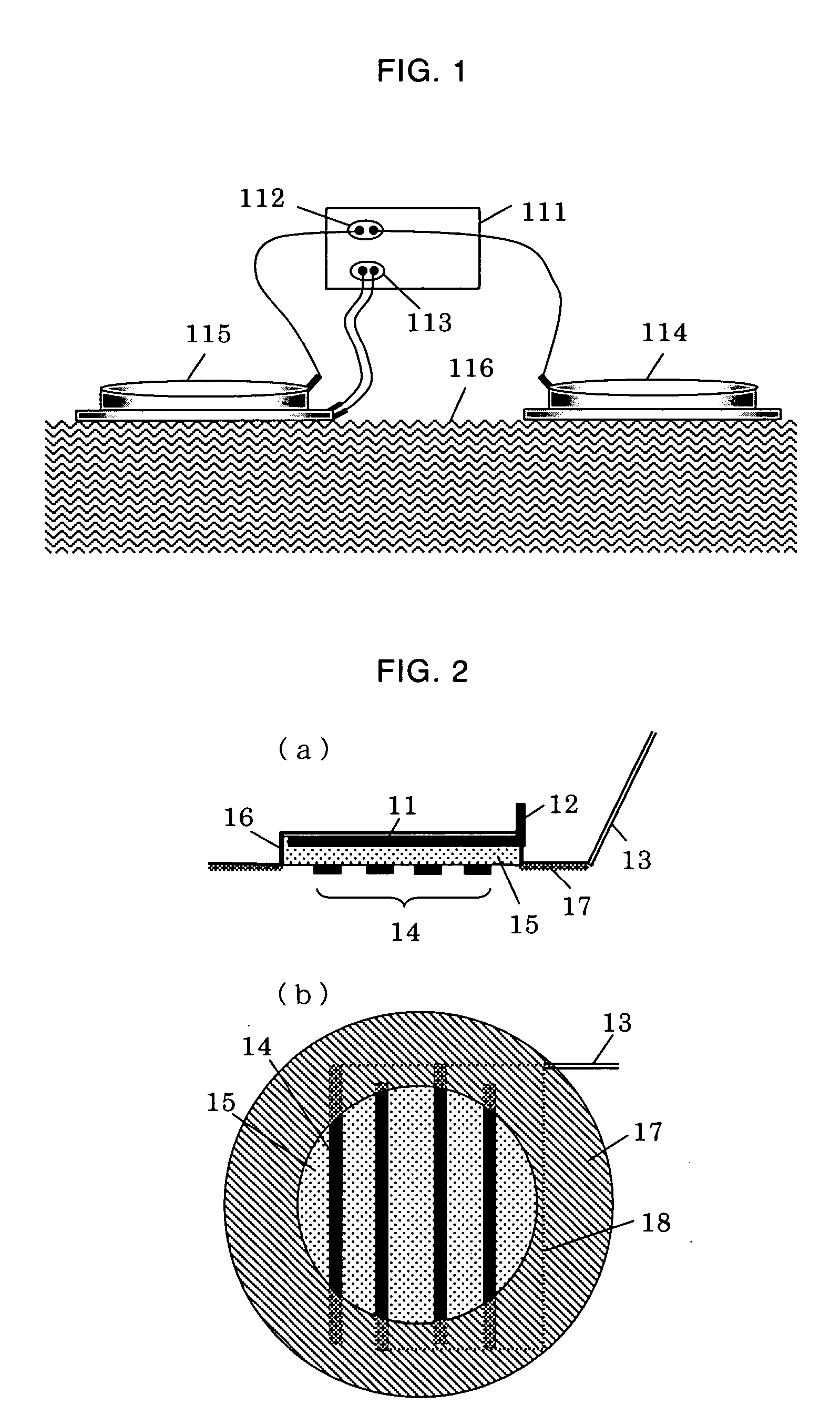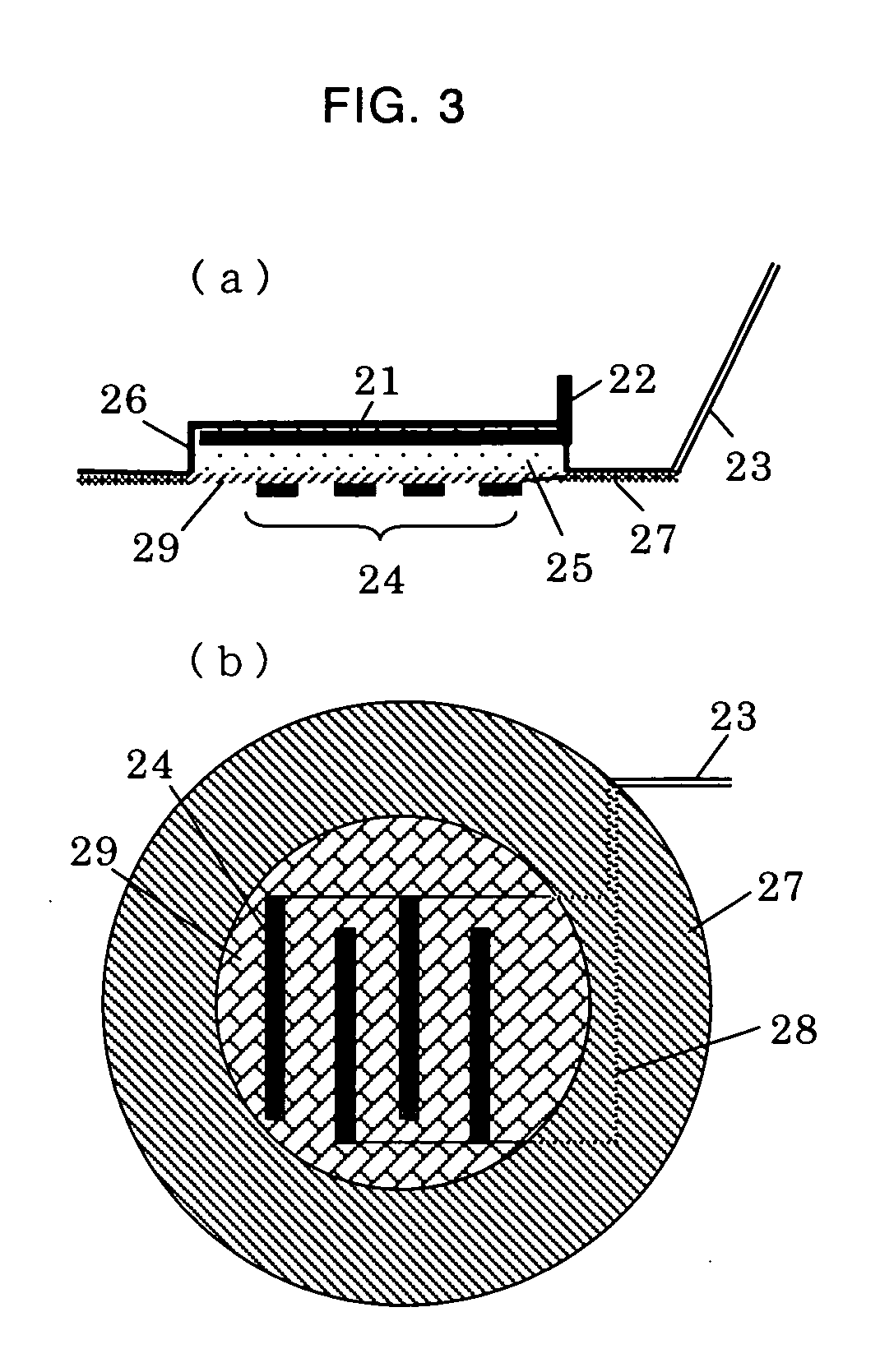Insulin administration apparatus
a technology of insulin and apparatus, which is applied in the direction of therapy, extracellular fluid disorder, metabolism disorder, etc., can solve the problems of poor absorption and stability, low sustainability of insulin, and inability to orally administer insulin, and achieve high electric field
- Summary
- Abstract
- Description
- Claims
- Application Information
AI Technical Summary
Benefits of technology
Problems solved by technology
Method used
Image
Examples
example 1
[0048]FIG. 6 is a view showing the electroporation-iontophoresis formulation used in the present examples. FIG. (a) is a perspective view thereof, FIG. (b) is a sectional view thereof, and FIG. (c) is a plan view thereof. As shown in the figure, the present formulation comprises: a backing 37 having a concave portion; an iontophoresis electrode 31 disposed on the bottom of the concave portion of the backing 37; an iontophoresis electrode-connecting terminal 34 for connecting the iontophoresis electrode 31 with an external power supply; an insulin lispro aqueous solution layer 35 disposed inside the backing 37; a pair of electroporation electrodes 32 disposed on the insulin lispro aqueous solution layer 35; an adhesive insulator layer 36 which is attached on the skin to insulate such that the electroporation electrodes do not unnecessarily come into contact with the skin; and a port 33 for supplying the insulin lispro solution.
[0049] Herein, the concave portion of the backing 37 has...
example 2
[0050] An experiment was carried out in the same manner as in Example 1 with the exception that the unit of the insulin lispro solution to be administered was set at 100 units / mL.
PUM
| Property | Measurement | Unit |
|---|---|---|
| pore size | aaaaa | aaaaa |
| pore size | aaaaa | aaaaa |
| distance | aaaaa | aaaaa |
Abstract
Description
Claims
Application Information
 Login to View More
Login to View More - R&D
- Intellectual Property
- Life Sciences
- Materials
- Tech Scout
- Unparalleled Data Quality
- Higher Quality Content
- 60% Fewer Hallucinations
Browse by: Latest US Patents, China's latest patents, Technical Efficacy Thesaurus, Application Domain, Technology Topic, Popular Technical Reports.
© 2025 PatSnap. All rights reserved.Legal|Privacy policy|Modern Slavery Act Transparency Statement|Sitemap|About US| Contact US: help@patsnap.com



